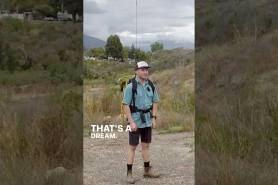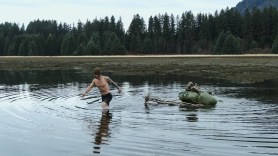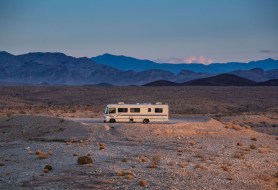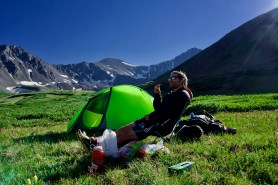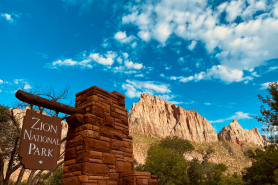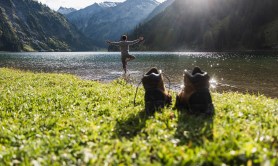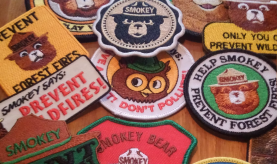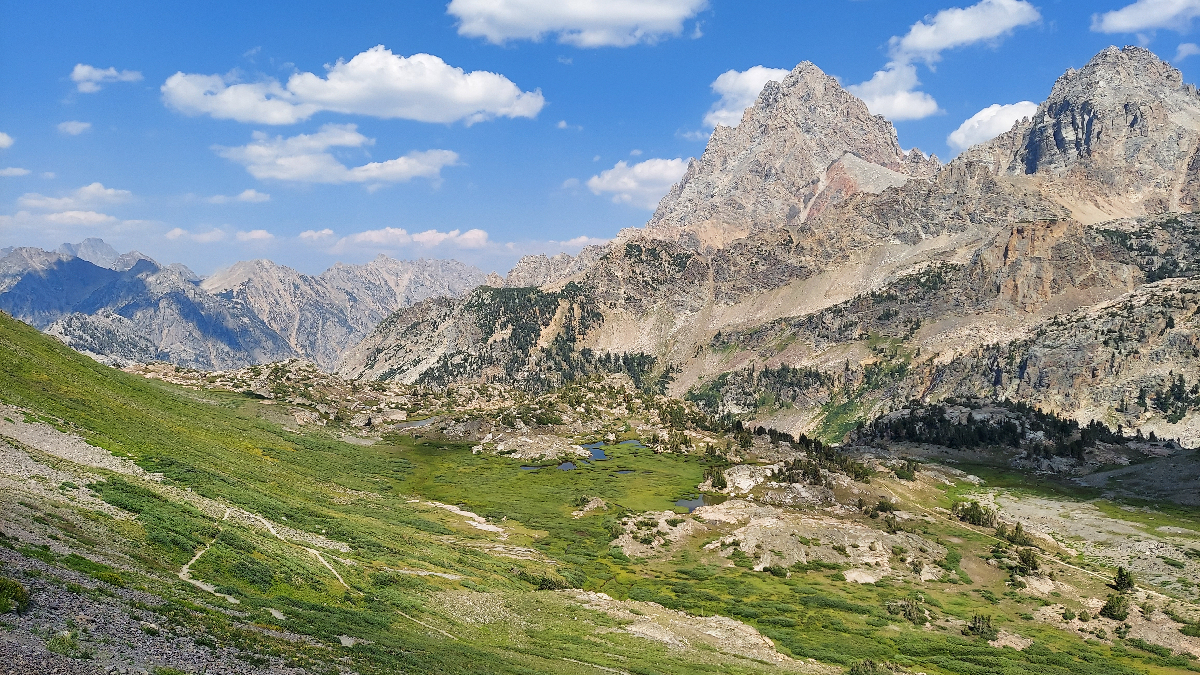

Grand Teton National Park is one of the best natural experiences America has to offer. The Tetons themselves are a natural wonder, and the park has outdoor experiences galore for families and individuals traveling through the area. Although it’s a part of the Greater Yellowstone Ecosystem, the most intact temperate ecosystem worldwide, the Tetons are a crowning jewel in and of themselves. Here’s a few things you might not know about the park.
Videos by Outdoors with Bear Grylls
1. It’s a Migration Hub

In the summer, the higher elevations in Grand Teton National Park serve as a fantastically diverse ecosystem for a wide range of animals. In winter, though, animals like Elk and Mule Deer will travel in large herds to lower elevations and warmer climates. Mule Deer “surf the green wave,” following green sprouts as they spring up from the ground, eating them when they’re most nutrient-rich. Birds take part in the journey as well. Ospreys migrate here from Cuba for the summer along with common loons from the west coast, while rough-legged hawks actually come for the winter. Currently, there’s a lot of work being done to preserve the migration routes and ensure this land is a resource for a long, long time.
2. Climbing the Grand Teton is More Accessible Than You Think
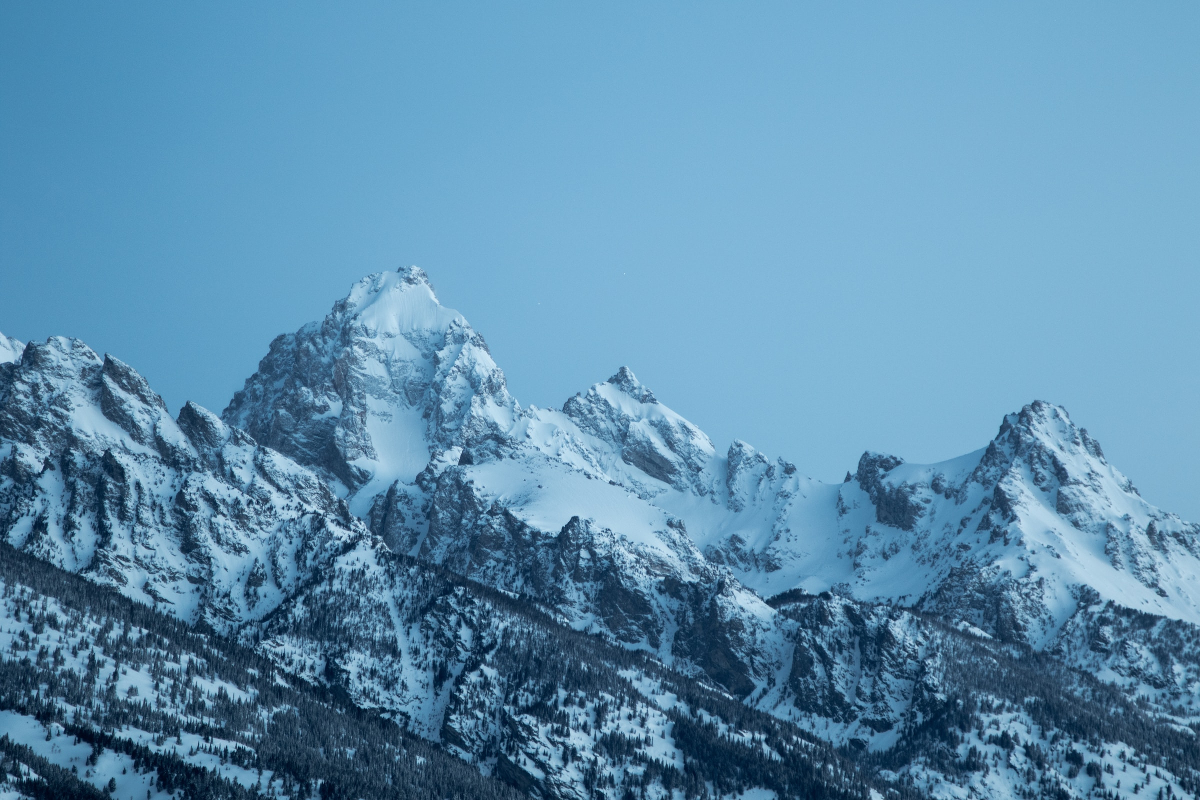
“The Grand,” as locals will call it, is perhaps the single most iconic feature of Grand Teton National Park. Getting close, staring up at it and the surrounding tetons is a must-have experience for anyone visiting the park. Maybe that’s not enough, though, and you’d like to look down from its peak.
Climbing the Grand is such a popular activity that during peak season there is often a queue of people near the top, waiting to summit. If you can afford a guided trip, this isn’t outside of your reach. Within reasonable levels of physical fitness, you actually don’t need climbing experience to make it. If you are starting from scratch, get ready for a few hard days. They’ll be worth it, though, to look down on the rest of the park from such a grand height.
3. You Can Walk Through the Park to Yellowstone
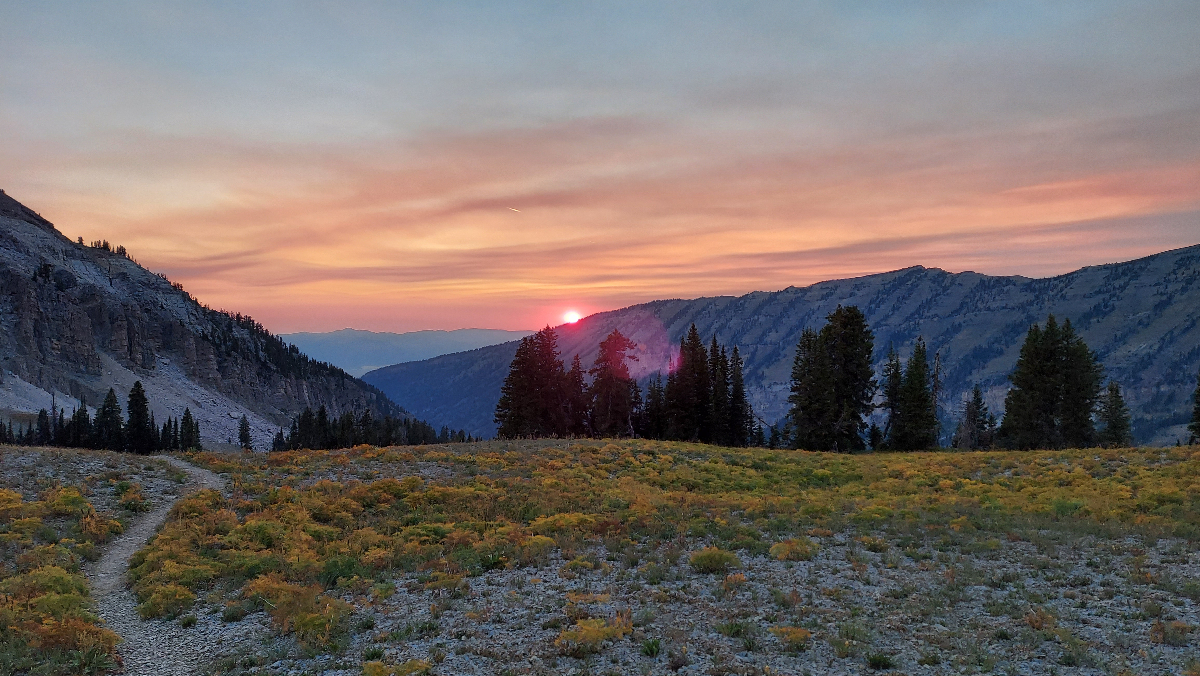
Hikers and backpackers can take the trip of their lives through Grand Teton National Park. The Teton Crest Trail is a gold star among America’s backpacking trails, and is more than worth getting a permit. You might get a close-up view of the park’s wildlife, from elk to marmots to grizzly bears. Paintbrush Divide is a highlight as one of the most stunning views the park has to offer, but every part of this trail is stunning in its own right.
While a route up to Yellowstone is not the official Teton Crest Trail, it is possible to walk from this National Park to its northern neighbor. If you spend some time with your maps, you’ll find you can link together trails from Hurricane Pass to Yellowstone’s Flagg Ranch. Trails like the North Teton Trail, South Leigh Trail, and Berry Creek Trail will get you up there eventually. Make sure to get to know your route well and pack adequately. Another tip for potential hikers, the Teton Crest Trail, occasionally dips into the Jedediah Smith Wilderness, for which you don’t need a permit to camp. If you couldn’t get a permit, you may still be able to make this trip.
4. Everyone’s After the Cowboy Powder
When winter falls on Grand Teton National Park, everyone floods to the slopes. While Teton Village and Jackson Hole Mountain Resort are technically just outside of the national park’s borders, it’s worth mentioning. The skiing outside of Jackson Hole is world-class. People come far and wide to test their courage against Corbet’s Couloir, a drop that only the most skilled skiers and snowboarders take on. There’s quality skiing for folks of all skill levels here in the Teton Range, but the real appeal is that sweet, undisturbed, cowboy powder. Thanks to the environment of Jackson Hole’s ski slopes and the wide range of land available, there’s a good chance you’ll be able to find some undisturbed sections on which to leave your mark.
5. It Makes a Great Mini Road Trip

Are you a road trip queen? Do you love the comfort of your car? Good news: you can easily take in Grand Teton National Park from the driver’s seat. It’s just a matter of which, if not all, of the scenic drives you’ll take. Even better, you don’t have to think about the constituent parts if you just drive the entire 42-mile scenic loop drive. If you take your time, stopping at the turnouts, breathing in all the incredible views you’ll be driving by, you can easily make a full day out of this trip. For a good starting point, come north on 191, take your photo at the South Entrance sign, then proceed up to Moose Junction and pick clockwise or counter-clockwise. Follow Grand Teton National Park’s “Outer” and “Inner” roads, taking in the peaks for all they are.
You Want It? Grand Teton National Park Has It
Between hiking, skiing, climbing, road tripping, and whitewater rafting, there’s something for everyone in Grand Teton National Park. The town of Jackson Hole, nearby, is a classic adventure town. It’s a quintessential portal to all the natural beauty that Grand Teton National Park has to offer. Personally, if I had the choice between a day in Yellowstone and a day in the Tetons, I would take the Tetons every time. Their spires are almost impossible to beat as far as a mountain view goes. You owe it to yourself to see them.



